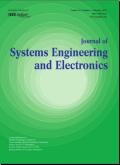Quantitative Method for Calculating Spatial Release Region for Laser-Guided Bomb
IF 2.1
3区 计算机科学
Q3 AUTOMATION & CONTROL SYSTEMS
引用次数: 0
Abstract
The laser-guided bomb (LGB) is an air-to-ground precision-guided weapon that offers high hit rates, great power, and ease of use. LGBs are guided by semi-active laser ground-seeking technology, which means that atmospheric conditions can affect their accuracy. The spatial release region (SRR) of LGBs is difficult to calculate precisely, especially when there is a poor field of view. This can result in a lower real hit probability. To increase the hit probability of LGBs in tough atmospheric situations, a novel method for calculating the SRR has been proposed. This method is based on the transmittance model of the计算激光制导炸弹空间释放区域的定量方法
激光制导炸弹(LGB)是一种空对地精确制导武器,具有命中率高、威力大、使用方便等特点。LGB 采用半主动激光寻地技术制导,这意味着大气条件会影响其精确度。LGB 的空间释放区域 (SRR) 难以精确计算,尤其是在视野不佳的情况下。这可能导致实际命中概率较低。为了提高 LGB 在恶劣大气条件下的命中率,提出了一种计算 SRR 的新方法。该方法基于大气中1.06\mu \mathrm{m}$激光的透射率模型和目标表面的激光漫反射模型来确定激光寻的器的捕获目标时间。然后,通过弹道模型计算边界弹道空间起始位置,得到空间释放区域的空间范围。该方法可根据瞬时速度、高度、离轴角和大气能见度等飞行测试数据确定 LGB 的释放区域。通过更有效地利用飞机释放条件、大气能见度等因素,SRR 计算方法可将 LGB 命中概率提高 9.2%。
本文章由计算机程序翻译,如有差异,请以英文原文为准。
求助全文
约1分钟内获得全文
求助全文
来源期刊

Journal of Systems Engineering and Electronics
工程技术-工程:电子与电气
CiteScore
4.10
自引率
14.30%
发文量
131
审稿时长
7.5 months
期刊介绍:
Information not localized
 求助内容:
求助内容: 应助结果提醒方式:
应助结果提醒方式:


